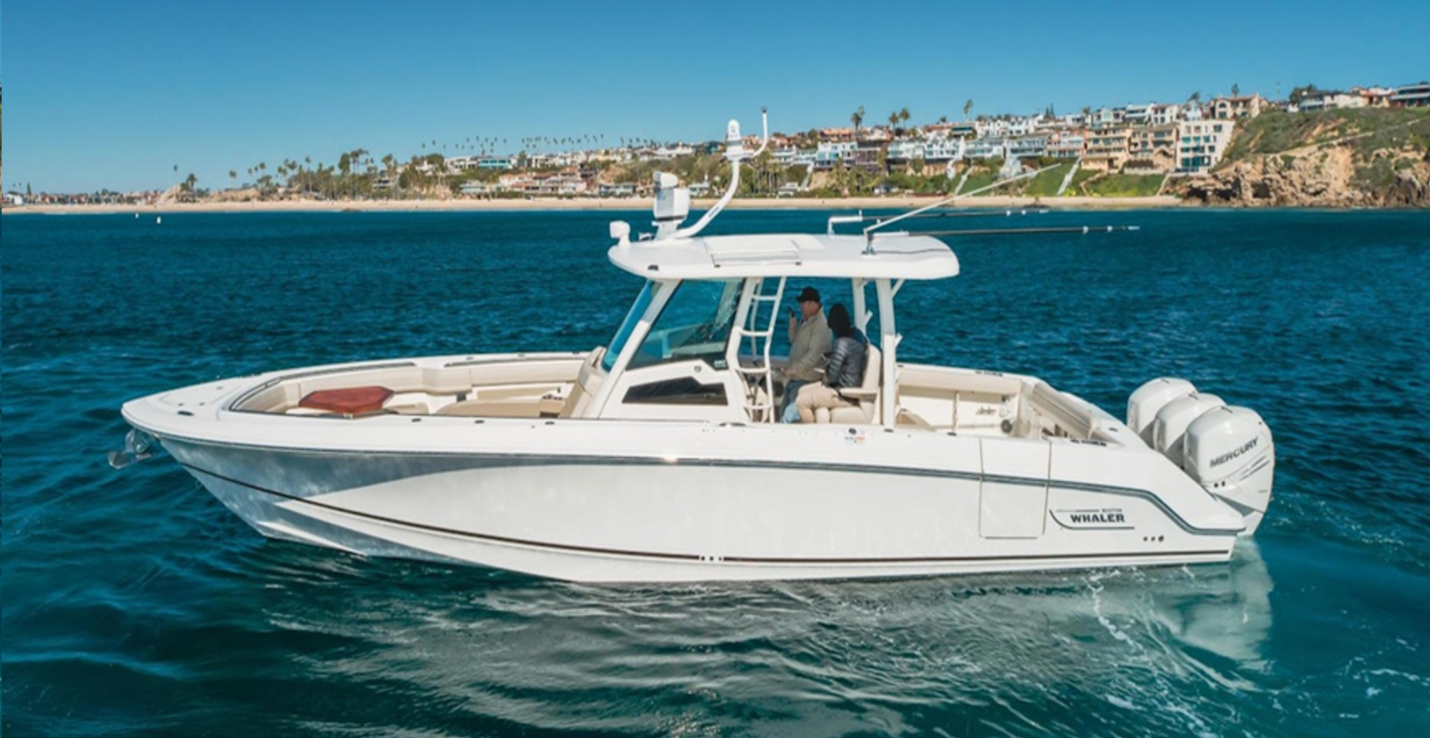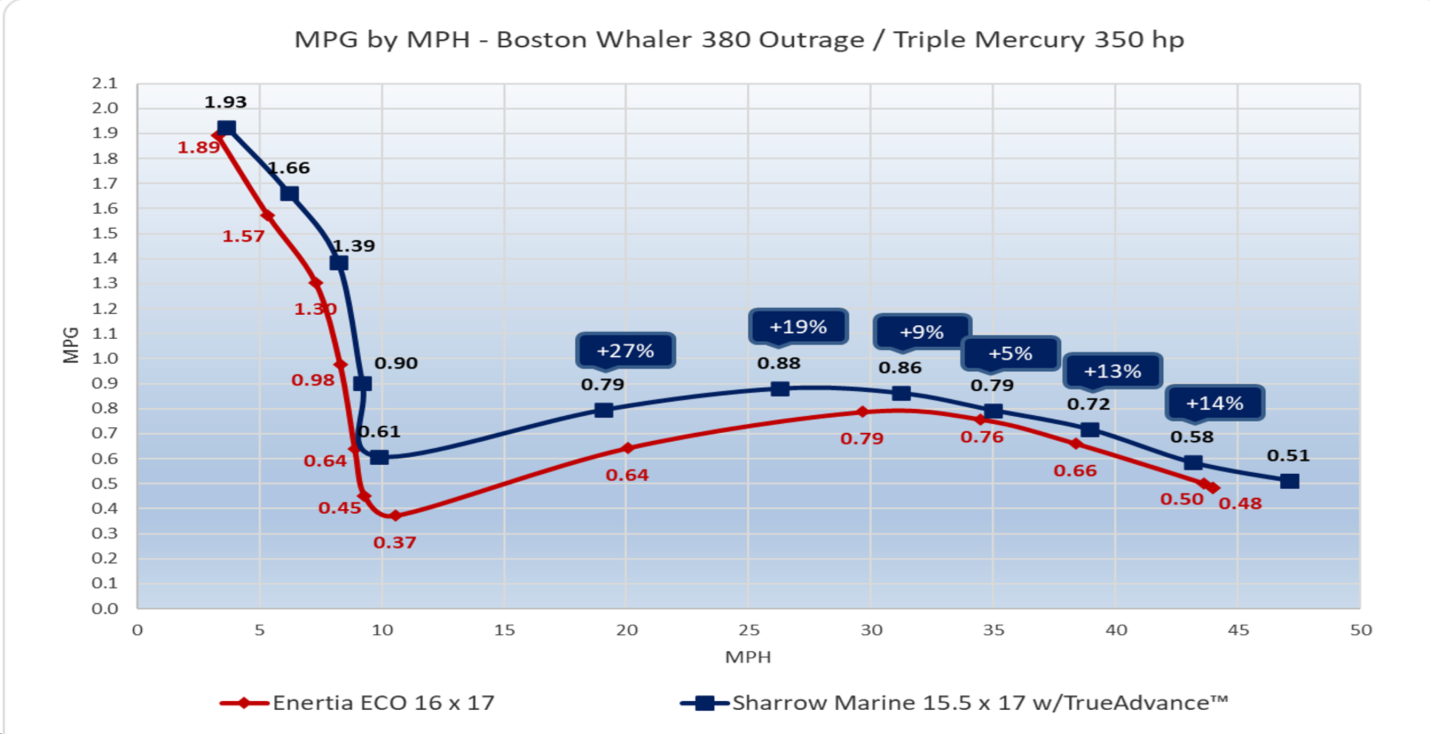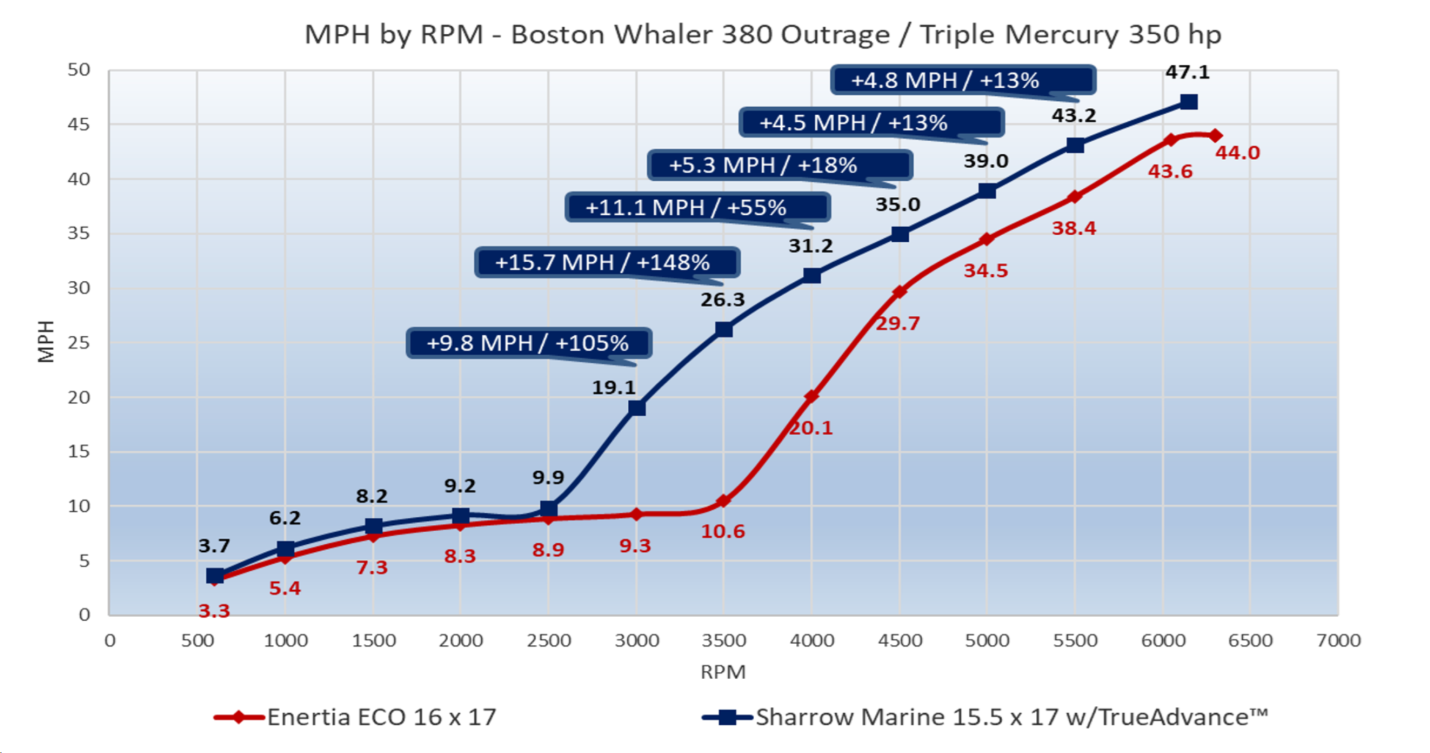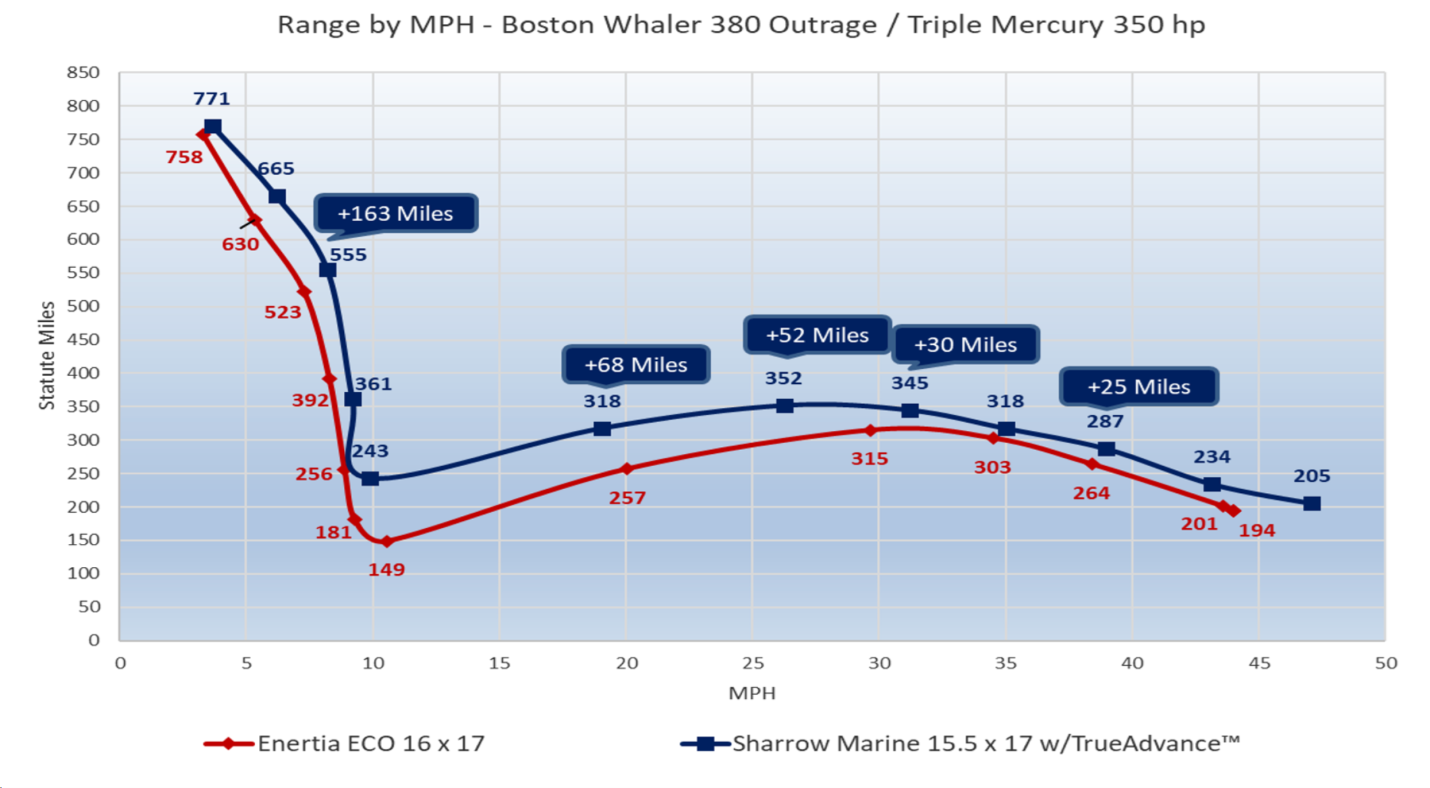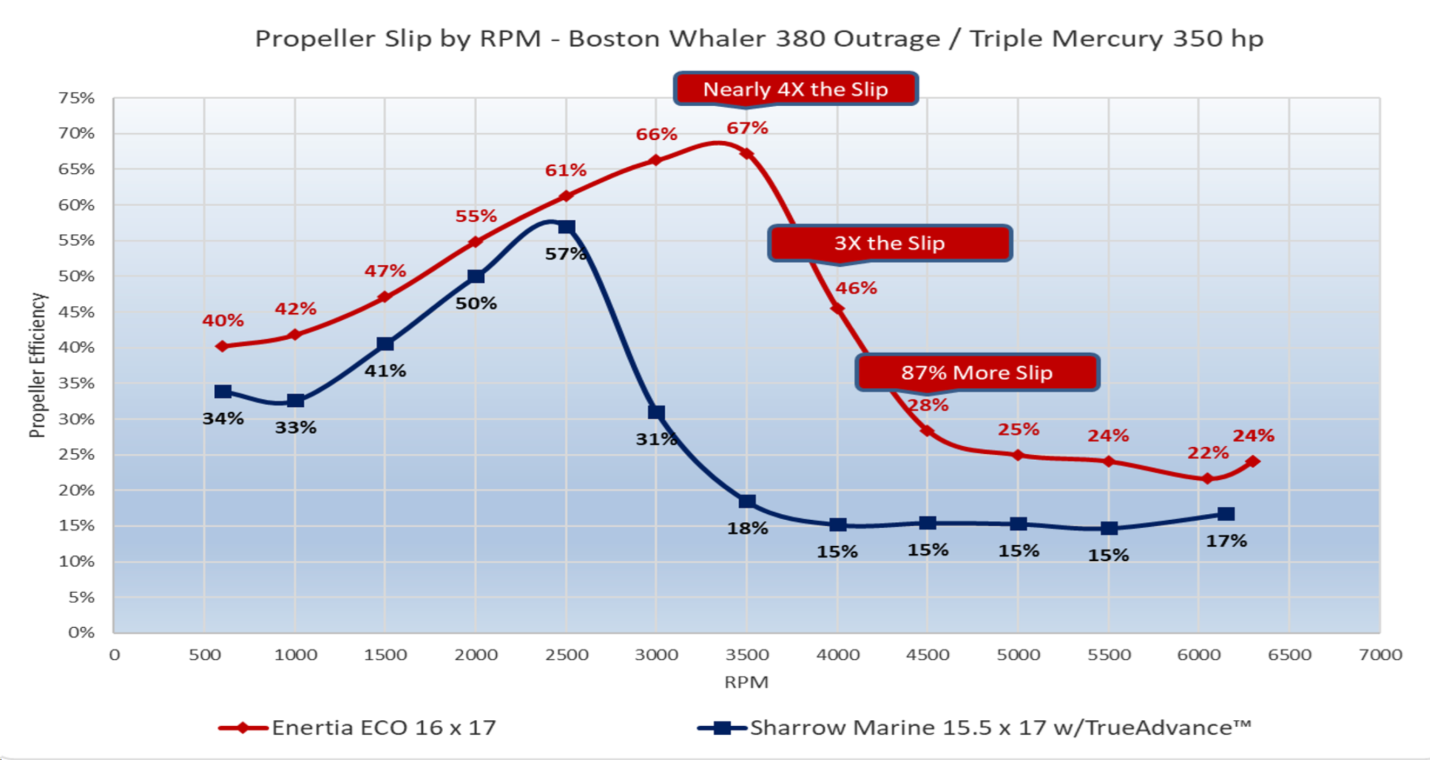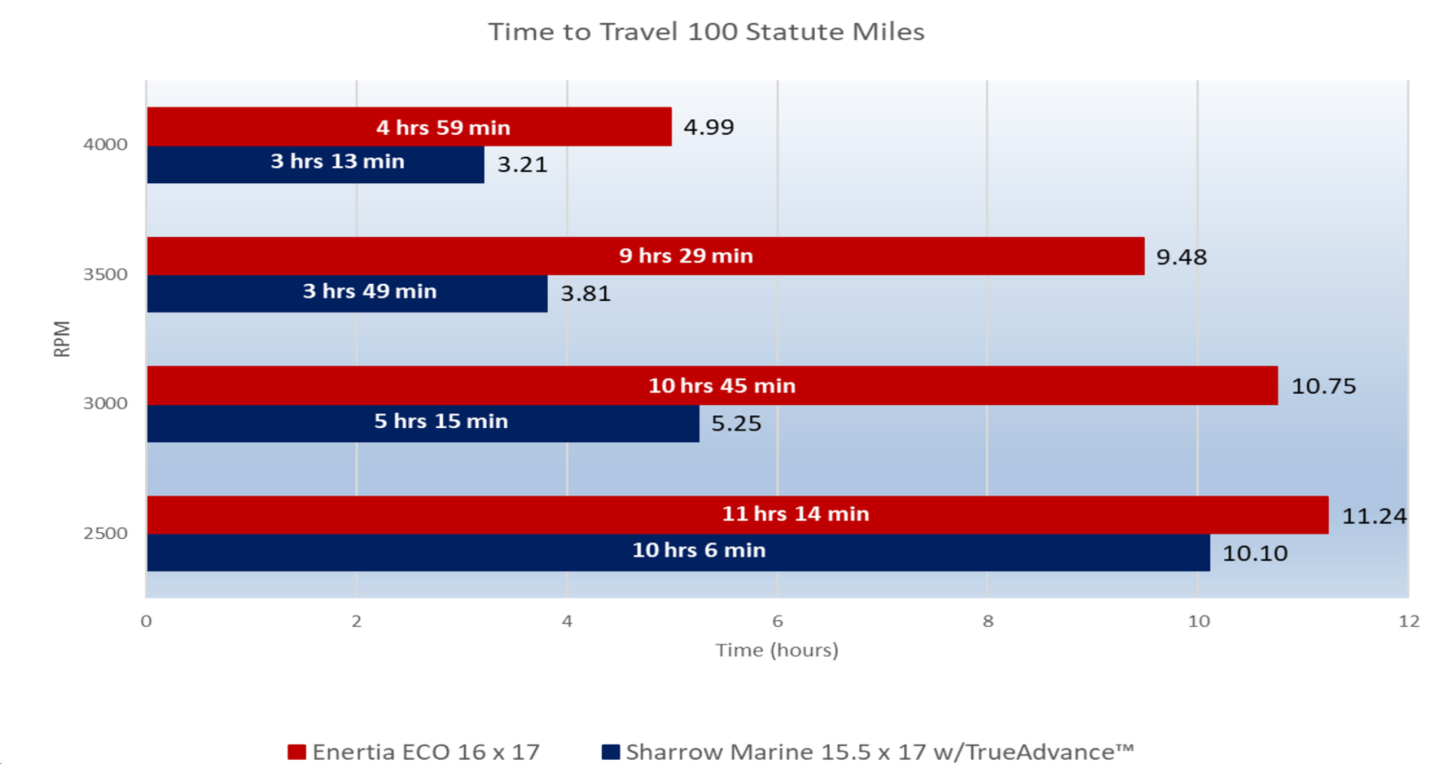On Triple Merc 350s Sharrow Props Were A Clean Sweep in Performance
This Boston Whaler 380 Outrage CC with 3x Mercury 350-hp outboards was the test bed for a propeller comparison test conducted by Sharrow Marine engineers, following a format very similar to that used here at BoatTEST.com. The conventional propellers were Mercury Enertia ECO 16” x 17” three-blade stainless steel, while the Sharrows were 15.5” x 17”, also stainless steel. The charts tell the story—in virtually every category, the Sharrows were tops.
Most head-to-head propeller tests have mixed results. Propellers that are great at top speed and fuel efficiency may be weak on hole shots and staying on plane in the mid-ranges, and vice versa. The innovative Sharrow Propeller, tested on a wide variety of boat and motor packages, has consistently proven superior in fuel economy in the mid RPM range, but is usually not the winner at WOT.
But on the Boston Whaler 280 Conquest equipped with trple 350 Mercs with 16 x 17 Econo Eco props, it was a clean sweep for the Sharrow props for all measurement categories.
In the chart above, the Sharrow/Whaler/Mercury package not only got better mpg at low end and through the hole shot, it also was significantly better at all rpm all the way to WOT. But that’s only the beginning of the story.
On the Whaler 380, the triple 350 Mercury’s got the boat on plane at 1,000 lower rpm, giving a huge speed advantage at 3000 (105%) and 3500 rpm (148%). The Sharrow speed advantage was less pronounced at higher speeds, but still maintained the lead all the way to WOT, with the Sharrow top speed 47.1 mph, the conventional props 44.0 mph. That's a remarkable difference at WOT.
The Sharrows not surprisingly scored on efficiency, as well—because they slip less on each revolution and advance a distance more nearly equal to the prop pitch, they are more efficient, giving better fuel economy at pretty much any speed from idle to WOT on the triple Mercury 350s. From 4000 to 5500 rpm, the Sharrow propellers consistently delivered 85 percent prop efficiency, which the Enertia ECO props had efficiency in the mid 70% range.
This is doubly remarkable because when the Mercury Enertia ECO was introduced over a decade ago, it scored a big advantage over most other convention props.
One of the most important advantages of the high efficiency from Sharrow propellers is the extension of range with a given fuel capacity. On the 380 Outrage, the Sharrow’s had 68 miles greater range at 20 mph, over 30 miles better at 30 and about 25 miles better at 40 mph.
Propeller “slip” is an important measure of efficiency—props with more slip use more fuel to go a given distance, while those with less slip, like the Sharrow’s shown here, use less fuel for the same distance. The greater grip on the water also means improved hole shots, and being able to stay on plane at lower speeds, very important when running rough water.
How does all this translate into real on-the-water use? Among other things, it allows traveling farther at a given rpm in less time, as shown in this chart.
The difference is most dramatic at 3000 and 3500 rpm, where the Whaler was not fully on plane with the conventional propellers, but was fully-planed off with the Sharrow propellers. This resulted in a huge advantage in the time required to travel 100 miles with the Sharrows, as you might in a crossing to some parts of the Bahamas from South Florida.
Consumer Caveat: All boats are sensitive to weight, horsepower, gear ratio and prop geometry. Relatively heavy boats such as the Whaler 380 Outrage need high horsepower, a tall gear ratio, combined with an aggressive prop pitch for optimum performance. With more horsepower, a different gear ratio, a greater pitch, or dual props, this boat can perform as well or better than the numbers seen here with conventional props.
The advantage of the Sharrow props in this application with three 350s producing a total of 1050-hp at high RPM, is that peak performance can be achieved with less horsepower and fewer engines. This can mean significant savings on engine purchases, yet still have a superior fuel economy and greater range.
The bottom line is, that in this application —triple Mercury 350s with 2.08:1 gear ratio, and 16 x 17 Econo ECO props—at least on the Boston Whaler 280 Conquest, the Sharrow props were hands down better props in virtually all ways.
